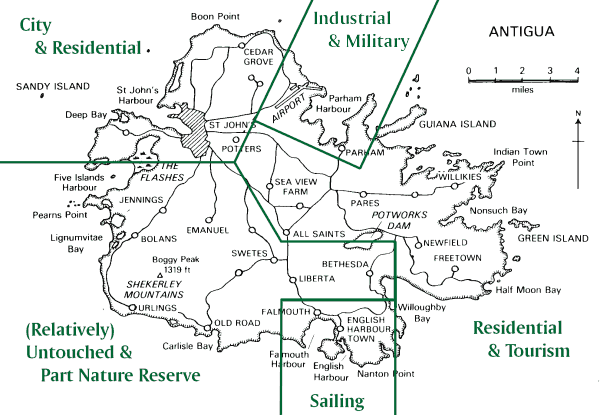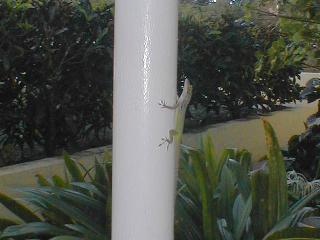
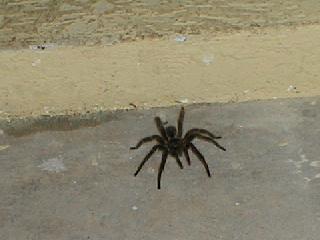
Wildlife at my door: Lizard and Tarantula. Download full size (1280x960) left, right.


Wildlife at my door: Lizard and Tarantula.
Download full size (1280x960)
left,
right.
Lizards of all kinds are also a prominent wildlife feature, the smallest ones only a few centimetres long and almost transparent, all the way up to Iguanas (sadly, I've never seen one of them). We had some tarantulas (or maybe they're another spider species, I'm not an expert - anyway, big and hairy things) around our apartements, and they were capable of entering under the door, but you could easily make them flee using a broom.
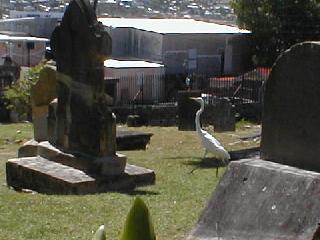
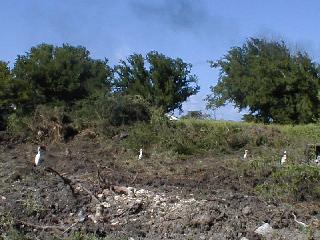
Cattlebirds at St. John's Cathedral and on uprooted land. Download
Full size left (960x1280),
right (1280x960).
I also found the so-called cattlebirds (their correct name is "Cattle Egrets") intriguing. Their name results from the standard pattern in which you encounter them: If there's a herd of cows on a field, one - exactly one - cattlebird will stand next to each animal, waiting for any insects to surface from the disturbed ground. The photograph on the right was taken shortly after the ground was worked with heavy machines; I guess they figured that one machine counts for four cattle.
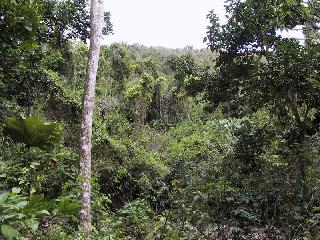
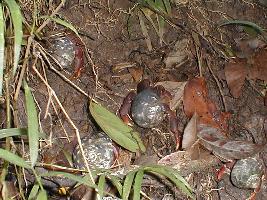
Rainforest in Wallings (Photo: Karsten Fourmont), and Hermit Crabs encountered on the way. Download
Full size left (800x600),
right (1280x960).
The most untouched (or least touched) landscape on Antigua is to be found at Wallings, off Fig Tree Drive in the south of the island. Wallings is a nature reserve and consists mainly of re-planted rainforest (the original rainforest had been removed for sugar cane plantations). You can undertake a number of walks there, and you may also hire a guide to explain the plants and wildlife to you. Within the reserve, there are places that offer very nice views out to the sea on in three directions, and you can also walk on to the isolated beach at Rendezvous Bay. In the forest, you'll find ruins of Wallings Reservoir which was built at the end of the 19th century and is no longer used.
Another place with interesting wildlife left intact are the mangrove swamps behind "Antigua Beach" in the north of the island. You'll be able to observe lots of birds there and "one-armed crabs", especially under overcast skies.
More detailed information about Antigua's flora and fauna is available at the Environmental Awareness Group on the first floor of the museum in St. John's.
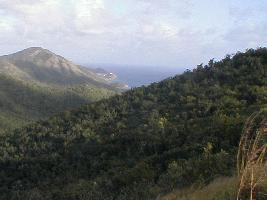
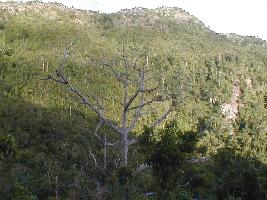
Rendezvous Bay viewed from Wallings; dead tree at Wallings.
Download full size (1280x960)
left,
right.
The map below gives you an idea of the character of different parts of Antigua. Of course, it can only serve as a guideline and is derived solely from my personal impression.
